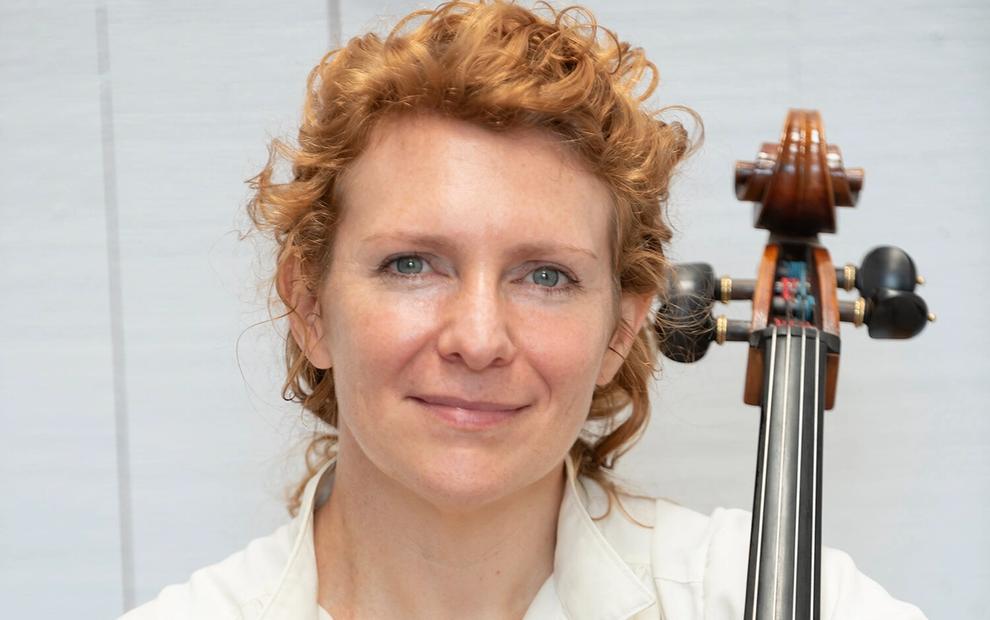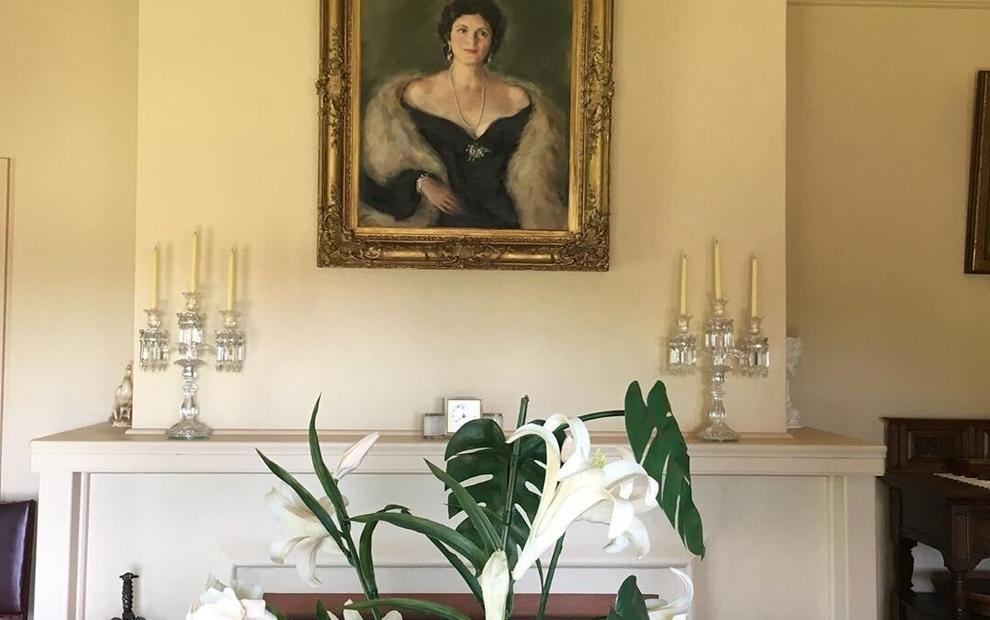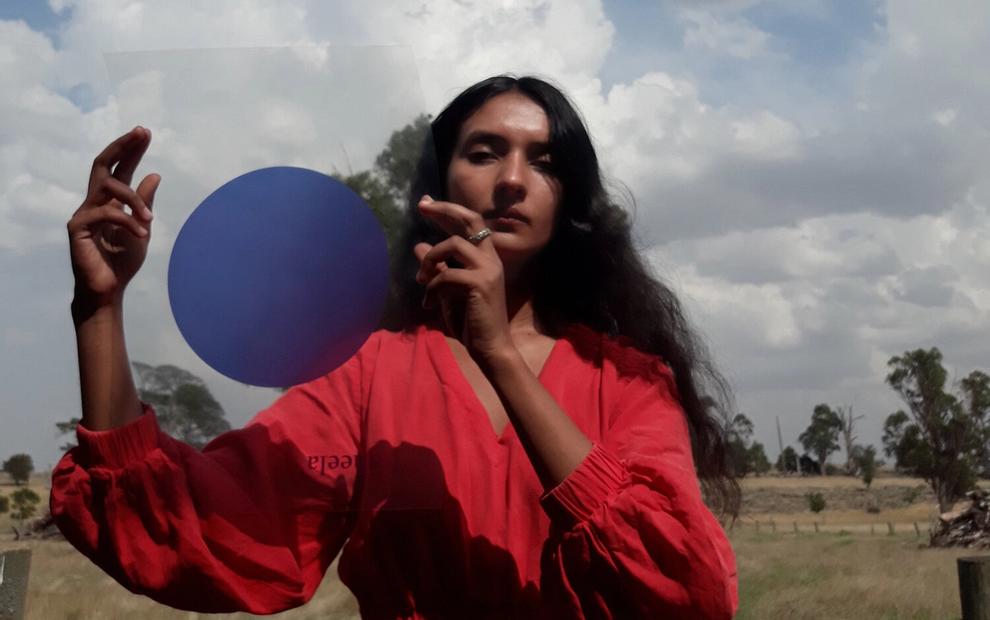

Mooramong Residency: Bonny Cassidy
Bonny Cassidy
23 Nov–7 Dec 2020
Residencies are artist-driven and, travel restrictions allowing, take place at Mooramong, a working farm of 4,000 acres that was famously owned by horse racing magnet Donald ‘Scobie’ Mackinnon who remodelled it in 1938 for his movie star wife Claire Adams. Within this inspirational, multi-dimensional setting, invited artists develop a body of work or a site responsive project, and simply undergo a period of structured and intensive research to grow creatively.
The colonial history, architectural flavour, working farm and nature reserve offer a myriad of possibilities for tangential artistic engagement. BLINDSIDE and the National Trust are particularly interested in projects and research surrounding issues of conservation, sustainability, settlement histories and pre-colonial histories specific to the site.
This year we have invited composer Zoë Barry; writer Bonny Cassidy and visual artist Pia Johnson to undertake solo residencies at Mooramong. If unable to travel, residencies will be undertaken at the artists’ homes in regional Victoria.
This residency enabled me to sit up close to a theme at the periphery of my recent writing: the long legacy of squattocracy in the Western District, and its relationship to changing practices and understandings of land ownership, management and heritage in Victoria.
Mooramong is one of a set of stations in the district that represent the earliest phases of its colonisation. Its original owner and builder, squatter Alexander Anderson, reflects the predominantly Scottish identity of the men who stole vast measures of Wathaurong and Gunditjmara land in the 1830s.
The ‘elite’ landowner that supported the expropriation of the region continued to exist well into the twentieth century. The Mackinnons proudly displayed their Scottish family tree on the wall in the home, and continued to live in a style of mid-century privilege that was only modern in its aesthetic: from bedside maid-summoning buttons, to a room dedicated solely to flower-arranging, this was excess enabled entirely by class and largely by imported goods. It was colonial in every sense other than the epoch recognised by settlers.
Walk just a minute away from the homestead, and you see thousands of head of sheep. Much of the estate’s land was sold for independent sheep farming to help keep the house and the Mackinnon’s wildlife reserve intact. That exchange comes with a price: runoff, fertilisers, invasive flora and fauna. Surrounding the waterways, Wathaurong heritage sites can be found; only a small area has yet been surveyed amongst the vegetation of the reserve. The large amount of outbuildings and their contents are not heritage overlaid, and so they are in a state of ruin – a foreshadowing of the homestead’s fate, or just a reality of resourcing such a huge museum?
The property raises interesting questions: what is the value of built heritage? Whose ‘building’ do we recognise? Does its value remain unchanged as cultural attitudes and priorities shift? What will be considered the ‘jewel’ of the Mooramong property in ten or fifty years; of the various types of conservation happening on the property, what will be the one(s) that are best resourced and promoted then?
I approached this residency as an opportunity to deepen a body of work that has been developing for about two years. Specifically, working at Mooramong would give me an intimate glimpse into the remnants of a ‘ruling elite’ of colonial land ownership, and a wide- open look at its continuing impacts as well as its personal, ecological and cultural contexts. Personal, because a branch of my family came to work a wheat farm one hour from Mooramong, in the same basalt plains, on the western side of the Hopkins River.
Ecological, because the multi-uses of the Mooramong estate would seem to the visitor to be at cross-purposes but might also reflect an important period of change. And cultural, because what at first appears to be the main human heritage of Mooramong – the Mackinnon’s homestead – is challenged by the identification of Wathaurong cultural sites on the property, during an era of major First Nations language and heritage revival and growth in the region.
The residence and property encouraged self-sufficient and critical practice. With only bedrooms to work in, we needed to have a strong sense of how to interpret and respond to what we found. There are no guided walks or experiences at Mooramong, outside the homestead tour. However, there are endless points of interest once you stay for more than a day and begin to watch its workings. For us all, then, the residency encouraged a turn to what was going on outside the walls of the Mackinnon’s garden – just pick a service road and start walking. What became abundantly clear during the stay, was just how many stakeholders give Mooramong its current purpose – the National Trust being just one. The shearers at the south end, the shepherd driving the boundaries, the manager and gardener working to keep the house and garden presentable on a shoestring while coordinating everyone else, the bandicoot researchers up at the big lake, the Trust for Nature covenant management, and the ongoing Wathaurong survey of heritage. Oh, and a few artists.
With a background in poetry, the question for me was how to form up all of these layered histories and embodied intersections when standing in a place such as Mooramong. I could simply say, poetry isn’t adequate; but I think that misses the point of what I found in making this work. Seeking to name anything on this property in a singular, reduced way isn’t adequate. Just as a herd of farting, munching meat sheep and a meadow of thistles stand beside a patch of remnant grassland and riparian bird habitat, so I found that verse, prose, history, imagination, fact and fiction assembled together.
I wasn’t able to realise a more outward-facing outcome due to COVID-19 restrictions, but I also decided to consolidate the research and ideas I had brought with me and to sit with the daily life of the property, than range far afield and acquire more. I created a series of new drafts that will be added to a book manuscript under development and partly located in the Western District. The research, observation and conversation undertaken at the residency has pushed me to let go of formal constraints and an identification with consistent style, in favour of more durational, investigative, open-ended approaches to the shape and voice of my writing.
Bonny Cassidy, December 2020








Since 2016 Blindside has facilitated a number of residency projects that foster engagement with regional Victoria, encouraging artists to grow connections between their practice, the environment and community.
Blindside was pleased to partner with the National Trust to facilitate the Mooramong Art + Research Residency in 2020.
This residency program takes place on the land of the Wathaurong and Gunditjmara people of the Kulin Nation. We recognise that sovereignty was never ceded - this land is stolen land. We pay respect to Wathaurong and Gunditjmara Elders, past, present and emerging, to the Elders from other communities and to any other Aboriginal or Torres Strait Islanders who might encounter or participate in the program.
Bonny Cassidy is a poet, essayist, critic and educator. She is the author of three poetry collections, with the most recent, Chatelaine (Giramondo Publishing, 2017), shortlisted for the 2018 Prime Minister's Literary Awards. Her poetry has appeared in major international journals and national anthologies, and her essays on Australian literature and culture have been widely published. Bonny has performed her work at festivals and residencies in Seoul, Wellington, California, Ottawa, Japan and Ireland. Bonny co-edited the anthology, Contemporary Australian Feminist Poetry (Hunter Publishers, 2016) and has facilitated writing workshops for the National Gallery of Victoria, Writers Victoria and schools. She teaches Creative Writing at RMIT University, Melbourne, and lives on Dja Dja Wurrung country in Central Victoria.
My writing has tended to take the form of poetry, which I publish singularly in journals online and in print, and as book-length collections. I frequently perform at readings, and founded a monthly poetry reading, Sporting Poets, which I ran in Melbourne for around 3 years. My methods of writing poetry have been dominated by two themes: ekphrasis (writing after other texts like novels, films and visual art) and field-based work focused on extreme ecologies and the senses. This has led me all over the world, from central Australia to Antarctica, and to audiences from regional school children to the RTÉ studio in Dublin. The politics of my writing, although it rarely represents me autobiographically or directly, reflects the social and cultural pressures that make my identity: a settler Australian, cis-woman. What makes me write is not to bear witness to my experience, but to make these apparent norms strange by forcing them through language.
In the past two years, I have started to look beyond poetry as a form for my writing. I have published a number of prose poems and hybrid forms that combine researched nonfiction with the abbreviation and spatial appearance of verse. These include the 'shuffle poem', grounds, commissioned by The Red Room Company in 2017: it was exhibited in print at Lab 14, Carlton, and as a banner on Melbourne trams; produced as a randomly sequenced digital publication in Unlikely journal; and performed at the Royal Botanical Gardens, Melbourne. My recent work including grounds has been preoccupied with the cultural legitimacy of settler colonial art (including my own). I am currently developing a nonfiction book manuscript that melds memoir, travel writing, poetry, history writing and counterfactual histories, including a section based in Ararat, Hexham and the Western District, not far from Mooramong. My interest in the breakdown of literary form in recognition of sovereign expression, has also led me to become increasingly interested in interdisciplinary collaboration and audiences. In 2018 I created and performed an open-air, spoken word text for the Avantwhatever sonic arts festival in Melbourne. At the moment I am commissioned to produce a text narration for a video art project using silent film. I hope to bring this spirit of intervention and collaboration on form and audience to my work at Mooramong, especially in acknowledgement of Wauthurong heritage and shared history.
Martina Copley is an artist and writer whose practice explores the poetics of compositional processes. She has worked with Sutton Projects, Propane, Bus Projects, RMIT Project Space, SEVENTH, West Space, City and Docklands Libraries, Melbourne Festival, and Liquid Architecture. She has co-produced two artist books and her writing (often with live readings) has been published by the Expanded Writers Collective, Runway Journal, no more poetry, the Australian Centre for Contemporary Art (ACCA), and Bloomsbury Academic. Martina is Chair Artistic Director at Blindside and lectures in contemporary art and writing at RMIT University, the Victorian College of the Arts, University of Melbourne and La Trobe College of Art & Design.
martinacopley.com

Related

23 Nov–7 Dec 2020
Mooramong Residency: Pia Johnson
Pia Johnson

23 Nov–7 Dec 2020
Mooramong Residency: Zoë Barry
Zoë Barry

3–22 Feb 2020
Mooramong Residency: Roberta Rich
Roberta Rich

3–22 Feb 2020
Mooramong Residency: Anna May Kirk
Anna May Kirk

3–22 Feb 2020
Mooramong Residency: Manisha Anjali
Manisha Anjali




